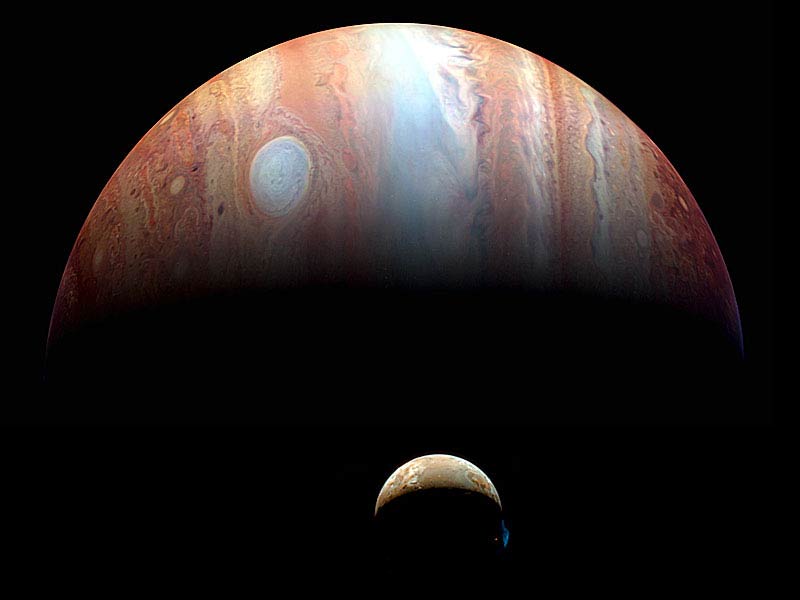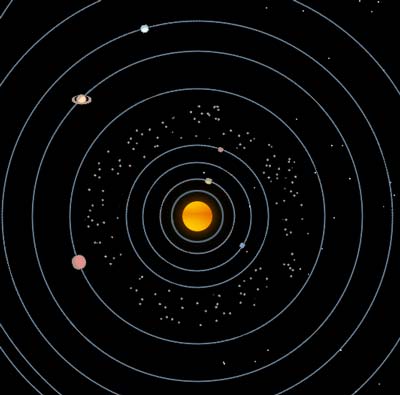Jupiter Up Close and Personal
by Kenneth Chang
5/10/07

Jupiter and its moon Io, taken from the New Horizons spacecraft en rout to Pluto. © NASA/ESA
On the way to Pluto, the New Horizons spacecraft has provided planetary astronomers their first close-up look in several years at Jupiter and its moons.
The primary reason for the Jupiter flyby in February was a gravitational slingshot that accelerated the New Horizons by 9,000 miles an hour to its current speed of 52,000 miles an hour.
Because the New Horizons was in the neighborhood anyway, its cameras zoomed in on sights like the Little Red Spot, a smaller version of the famous Great Red Spot, Jupiter’s thin rings and the volcanic eruptions on Io, a Jovian moon. The encounter also gave the New Horizons team a chance to practice and prepare for a Pluto visit in July 2015.
“We’ve really learned how to drive this spacecraft,” said S. Alan Stern, associate administrator of NASA for the science mission directorate and the principal investigator for the New Horizons mission.
At a news conference last week, scientists working on the mission presented a sampling from 700 observations taken on the flyby.
As the spacecraft approached, it had a good view of boulders in Jupiter’s narrow rings and of the way two tiny moons, Metis and Adrastea, nudged and shepherded them.
“This is the best-ever views we’ve ever received of Jupiter’s rings,” said Jeff Moore of the Ames Research Center in California, who led the science effort during the flyby. “By incredible good luck, we happened to be on the right trajectory with the right instruments.”
After the flyby, the New Horizons took rearview photographs of sunlit dust particles in the rings.
The Little Red Spot formed over the last 10 years, when three smaller storms in Jupiter’s atmosphere merged, and is now about half the diameter of the Great Red Spot that has swirled for 300 years. Over the last year, the smaller spot has become redder, presumably as it sucks up colored materials lower in the atmosphere.
For one image, the scientists combined a color photograph taken by the Hubble Space Telescope with a more detailed black-and-white image from the New Horizons. Hal Weaver of the Johns Hopkins Applied Physics Laboratory, a project scientist for the mission, said it evoked van Gogh’s “Starry Night.”
“But this is the real deal,” Dr. Weaver said. Other instruments on the spacecraft might be able to identify different materials in the different clouds, giving scientists clues on atmospheric dynamics.
The New Horizons flyby coincided with large eruptions on Io, the most geologically active body in the solar system. By luck, the craft was able to capture a plume from the volcano Tvashtar rising 200 miles into space. As it flies away, the spacecraft continues to gather data on charged particles that flow down the tail of magnetic fields on Jupiter.
 See an animation of the movement of planets in our solar system.
See an animation of the movement of planets in our solar system. See amazing views from space
See amazing views from space